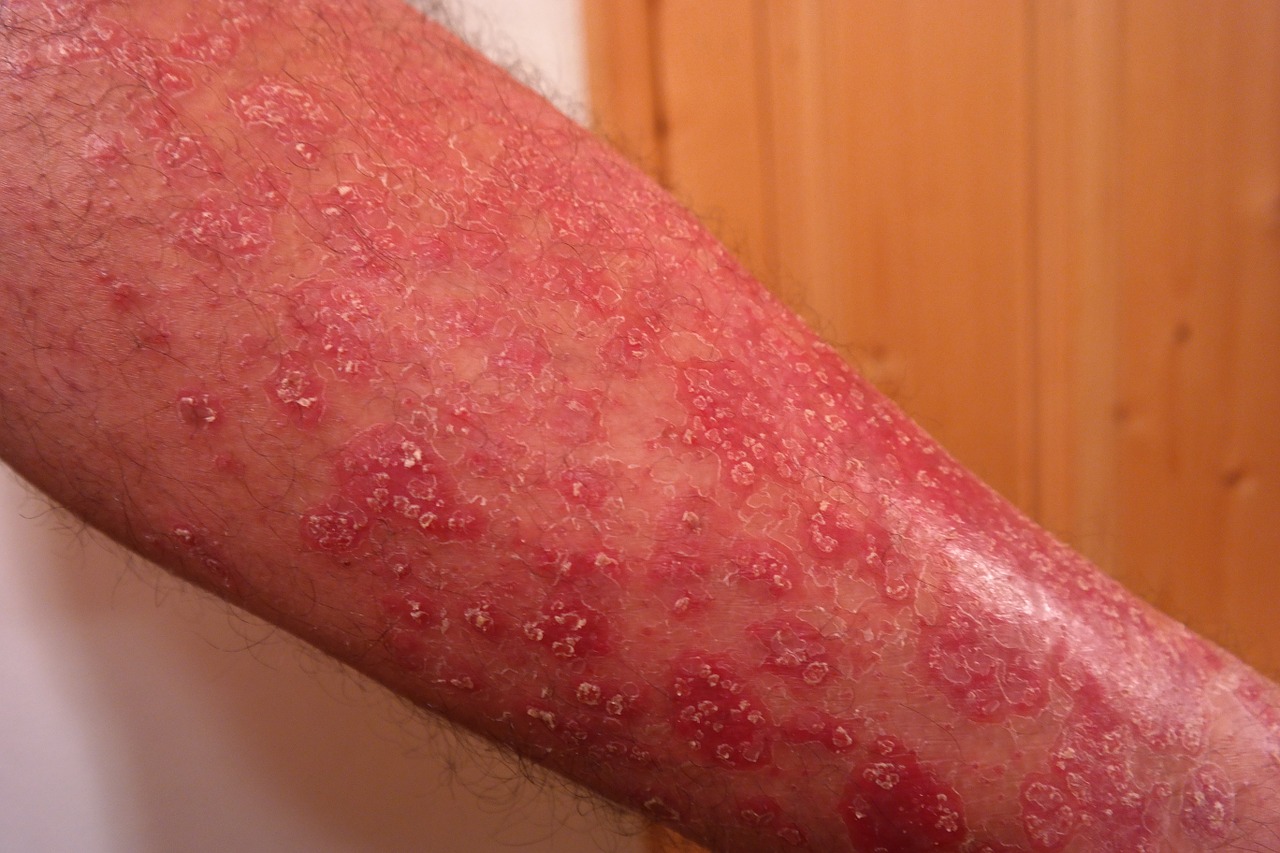
Image by Hans Braxmeier from Pixabay Representative image
Introduction:
It is scientifically logical to believe that the malady Psoriasis dates along with mankind.
Its chronic nature, its abject visibility, and its frequency of occurrence have in the present day made it is a concretely defined skin disease.
It has been observed that environmental, immunological, and genetic factors emphatically influence the onset and protracted manifestation of the disease. It follows that these factors are of great significance in the aetiological profile of Psoriasis.
In the nineteen hundreds and earlier, the descriptions of a disease considered «morbi in pulchredine», were at best non-empirical and with a sizeable amount of confusion and ignorance. To gain insight into this terrible disease, it is important to meander into the pages of history to gain composite information about psoriasis.
Psoriasis is an inflammatory skin disease that is chronic in nature. It is characterized by a plethora of clinical markers which is an interplay of genetic, environmental, and immunological factors.
Four decades of clinical and basic research on psoriasis have elucidated many of the biochemistry mechanisms underlying the disease. These findings have paved the way for further inroads into this disease and its understanding.
As per the norms of the National Psoriasis Foundation, ancient Egyptians treated skin afflictions like psoriasis with various unorthodox methods like the use of cat and dog feces, goose oil, onions mixed with sea salt, and even urine.
However, present-day dermatologists are puzzled by these archaic remedies. Certainly, these approaches cannot be ignored as the underlying science may not be very obvious.
A very indicative Case in point: Adam Friedman, M.D., a professor of dermatology at The George Washington University School of Medicine, says he “truly can’t think of a reason” why these things would’ve been used to treat psoriasis. “Goose oil is similar to olive oil and could be moisturizing for the skin, but that’s about it,” he says.
Hippocrates, who is widely recognized as the Father of Medicine, described dry, flaky skin patches as “lopoi,” meaning epidermis, and was believed to include psoriasis and leprosy. In ancient times, psoriasis and leprosy were many times confused with each other.
Hence, it is important to identify and enunciate some key differences between the two diseases—importantly leprosy is a contagious bacterial infection aimed at the nervous system which in turn leads to an abject loss of nerve sensation.
Additionally, skin lesions caused by leprosy appear lighter and less pigmented than normal skin and characteristically do not have flaking scales which are typical of psoriasis lesions
The term “psora”, which means “desquamative illness” was first used by the Greek physician, Galen. He specified that the description was apt because of the various aspects which characterize the manifestation namely, itchy scale-like lesions of the eyelids, corners of the eyes, and scrotum. Importantly, these may be the first indicators to both the patient and the Doctor.
The 1300s
Leprosy and psoriasis have been confused for centuries and consequently, several psoriatic patients were diagnosed with leprosy and received the same regimen of “treatments,” which back then, included social isolation, declaration of death by the Church, and starting in 1313, burning at the stake ordered by Philip de Fair, the King of France.
Since there were numerous sociocultural factors involved, the patient was extremely depressed and mentally compromised. This also led to a number of patients trying to end their misery through suicide.
1809
This period would be marked by a proposed classification and a more organized approach to the study of Psoriasis. Various physicians like Dr.Robert Willian and Jean-Louis Alibert generated a methodology of typifying Psoriasis as a disease based on various parameters like causative factors, external manifestation factors, the progression of the disease, its treatment methods, and even the patient’s response profile.
Significantly, Dr.Robert has left behind various illustrations and drawings which are extremely valuable as tools for future researchers and posterity.
1841
Dr.Ferdinand Ritter von Hebra, has been given the singular credit for the lucid and scientific bifurcation of leprosy and Psoriasis. He is also credited with the pioneering of such therapeutic approaches like the use of arsenic and tar and even exposure to Sunlight.
He was also the practitioner who recommended the deletion of the prefix “lepra” from the formal description of the disease. This helped in the obliteration of any anomalies about various similar pathological conditions.
1860
This era is characterized by researches and findings which could through light on the conditions of syphilis, leprosy, and arthritis, and the roles they appear to play in the presentation of Psoriasis.
1950s
There was a quiescent period of about nine decades before Corticosteroids were prescribed for topical application for Psoriasis. It is important to note that William Goeckerman added that the regimen of ultraviolet Phototherapy recommended by scientists of the bygone era like coal tar and arsenic salts were reconfirmed as treatment options with empirical success.
1960s to 1970s
In this decade, several detailed inroads were made into the understanding of the immune presentation of Psoriasis and the immune changes in the body of the subject when he is inflicted with the disease. It was categorized as an autoimmune disease.
Studies on classified cell lines were actualized. A very nodal finding was the effect of various specific wavelengths of Ultraviolet light on affected tissues and cell aggregates, in the treatment of Psoriasis. A systemic approach to medication was also initiated at this time. Many medications for topical use were also introduced and approved.
1973
A rheumatologist has been broadly accredited to the comprehensive understanding of the emphatic and unilateral conjugation of Arthritis and Psoriasis. The publication of John M. Moll and Verna Wright is even today lauded as a very indicative treatise of Psoriasis.
The early 2000s
The turn of the century saw what is described by many as the Renaissance of Biological Science. Hence, research endeavors were projected towards particulate biomolecules and cellular level studies to understand Psoriasis.
The role of T-cells, certain immune proteins, and even tumor necrosis factors were well elucidated as an outcome of these efforts.
Hence, historically, the studies on Psoriasis also contributed to a better understanding of immunological science and even cell biology. Additionally, it has also given scientists a novel research methodology in terms of instruments and experimentation techniques.
2019 and Beyond
The past couple of years have brought to the forefront an array of promising novel approaches in the studies and treatment of Psoriasis.
Bimekizumab is a novel injectable approach for Psoriasis and it is a monoclonal antibody that is at present in the Clinical trial stage. Encouraging results are available hence, one can expect a specific and concrete line of treatment for this demeaning condition would soon be available.
Notably, a holistic approach towards both treatment and rehabilitation of Psoriasis inflicted subjects is also being evaluated. Lifestyle and dietary interventions and ancient Vedic practices are all epicenters of research on Psoriasis which hold promise and potential.
The author acknowledges the use of authentic medical literature from reputed media to structure this article.
The contents of this article are not meant to be a substitute for medical advice, diagnosis, or treatment, and should not be construed or treated as such. Always seek the advice of your physician or another qualified health provider with any questions you may have regarding a medical condition. We make no representations, warranties, or guarantees, whether express or implied, that the content on our website is accurate, complete, or up to date.
Sign up for the QuackTrack.org newsletter below!














